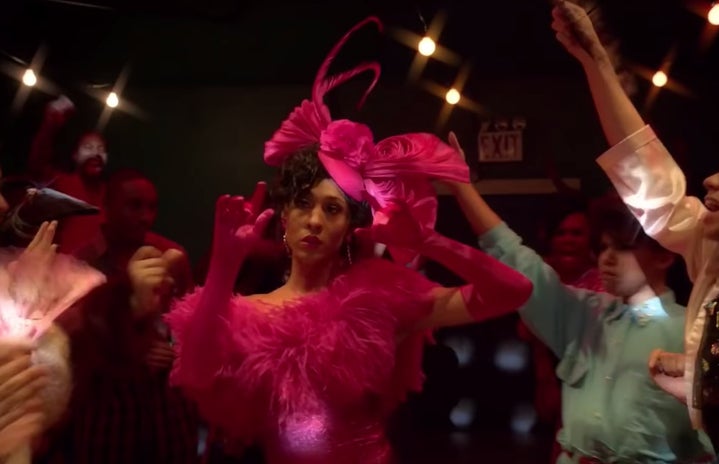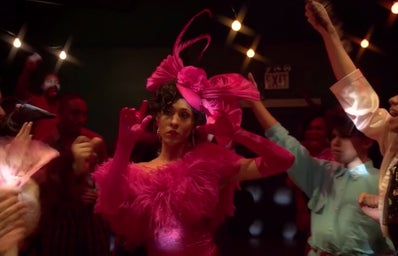When we talk about voguing, most of the people automatically remember the dance moves from Madonna’s “Vogue” video, released in the 1990s, or appearances in TV shows such as Pose, Legendary or Ru Paul’s Drag Race. But, although this dance is sometimes wrongly assigned to white artists like Madonna by the mainstream media, there’s an entire background of fight for black and latino LGBTQ rights behind the voguing history.
Having its first appearance in Harlem in the 1920s, the voguing dance moves were a part of the New York City’s black drag queen balls scene. By that time, a “ball” was defined as the place where the drag competitions on who were wearing the best outfit or who had the best moves took place in the neighbourhood.
Performers from what is called The Harlem Renaissance (1920-1935) represented the artistic, intellectual and cultural LGBTQ movement during that time, challenging social structures on gender, race and sexuality during these competitions. Most of the movement’s members were openly homossexuals and/or had sexuality nuanced distintinctions, such as gender fluidity.
As the years passed, Harlem became one of the most important places for the LGBTQ community in New York City, and the “balls” became bigger, with new members and performers. Starting from the 1960s, the ballroom culture transformed itself including new categories, and some of the dance moves from the drag queens became what we call today as “vogue”.
Vogue as a political position

The name “voguing” comes from the Vogue magazine’s model poses. At first, performers tried to reproduce some of the posing structures from Vogue’s models on their dance moves, pretending at times to put on makeup and giving life to creative performances during the ballroom competitions.
It’s important to remember that voguing isn’t actually just another type of dance, but mainly an act of resistance. From the 1960s to the 1980s, most of the vogue performers were black or latino LGBTQs (mainly trans and queer) that were rejected by their family homes. Because of their parents’ rejection, these individuals were homeless and had to work at piers with prostitution, for example.
On a TEDx Talk about the language of voguing, the performer Ronald Murray tells the audience that these kids who were rejected by their family learned how to stand up for themselves on these piers. These individuals usually would get chosen by House Mothers and received a place to stay. According to Murray, “mothers created Houses, places where these kids should feel safe, just as they should be under their parents’ house”. Each house also received a family name, which became a thing that the dancers would be proud of inside and outside the balls. Murray also states that the “houses are the physical unity of the family formed”, because the members shared the same principles.
These places also were symbols of resistance, such as the balls and the voguing dance moves. Crystal LaBeija, one of the first House Mothers, created the House of LaBeija in 1977, after participating in some drag queen balls and questioning why black or latino drags never won any prize in these competitions. Years before that, in 1972, LaBeija also had created her own ballroom with the intention to give space and voice to the minorities, helping them to express themselves.
Practices and nomenclatures within the movement
On the 1990’s documentary Paris Is Burning, the former drag queen Dorian Corey talks about how expressive the voguing dance moves were, especially when it comes to the sassiness of the performers. Outside of the balls, the individuals used a tactic called “reading” to stand up for themselves and insult the others. Mainly used against cis and hetero persons, Corey defined “reading” as “finding a flaw [in one person] and exaggerating it”.
The reading techniques transformed themselves on the “shades” inside the balls. Corey describes the shades as a form of insult used by individuals who were on the same social level. The drag queen states that “shade is ‘I don’t tell you’re ugly, but I don’t have to tell you because you know you’re ugly’”. Using their dance moves, the performers were used to throw the shades at each other during the competition.
The ballroom is an extension of the culture created by the Houses, becoming places where the members were able to compete against each other in these events. The main point of NYC’s ballroom culture happened in the 1980s, with a lot of Houses and ballrooms being created.
When it comes to the mainstream media, most people think of Madonna’s dance moves on “Vogue” as the voguing’s big moment. What the people don’t know is that all the choreography behind the video was made by Willi Ninja, known as the Grandfather of Vogue and House Father of the House of Ninja, an important name in the ballroom culture and voguing scene!

A Brazilian way of voguing: An Interview with Rany Hilston
Yes, here in Brazil, the ballroom movement is more alive than ever! The Kiki balls happen all across the country, from the North to the South, with new Houses being created every month. To understand a little bit more about the Brazilian balls, Her Campus Cásper Líbero talked to Rany Hilston, the Mother of the House of Pussytivismo. Check out a selection of the best moments of the talk on the list below!
- Where everything began…
-
Born in Recife, Rany works as actress and singer, and had her first voguing class in 2015, when she was visiting the city of Santa Cruz do Sul, in Rio Grande do Sul. She got interested in the story of the movement and started to practice the voguing dance moves. The House of Pussytivismo was raised in Pernambuco’s capital by Rany and three other members, Duda, Ayara and Paula, in 2016. Get to know more about the meaning of this movement in the audio below.
- Understanding our own way of voguing
-
In the next audio, Rany tells a little bit more about the balls structure and its categories. She states that there are no main categories in the ballroom movement and they change from event to event. Rany also talks about two of the regional categories – Batekoo and Samba No Pé:
- Voguing against the prejudice
-
Oh, and we can’t forget to mention all the background history of the fight for LGBTQ rights when we’re talking about voguing. In the following audio excerpt, Rany talks about how homophobia, transphobia and, in Brazilian’s specific case, xenophobia are harmful to the ballroom movement. Understand more about it in the audio below.
———————————————————————-
The article above was edited by Helena Cardoso.
Like this type of article? Check Her Campus Cásper Líbero for more.


